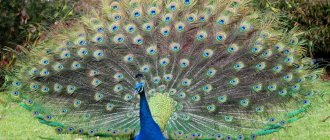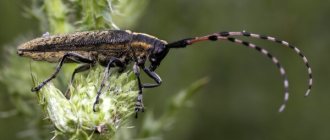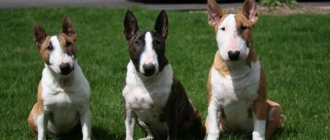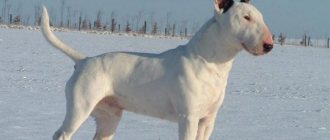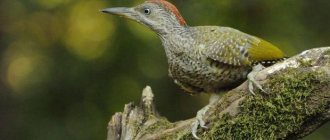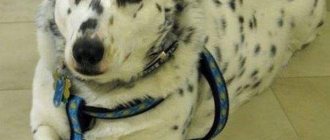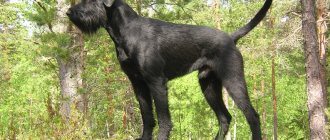When asked what a dog is called in Latin, many people will just shrug their shoulders, although most of them know, if not the word itself, then certainly its derivatives. For amateur gardeners for sure. After all, the botanical names of some species include the word canina, that is, “dog-like.” And there are also popular names, one way or another connected with man’s best friend! Maybe this year we should pay more attention to these plants?
Article on the topic About rose hips in a new way. What are the benefits of wild rose flowers, fruits and seeds?
Description of snapdragon
The scientific name of the dog flower is antirrhinum (in Latin Antirrhinum). This perennial plant belongs to the herbaceous type of the plantain family and includes about 50 species. Its distribution area is European countries with warm climates and North America.
Plants can consist of one stem or several with branches, racemose inflorescences up to 60 cm in size, large flowers. There are species of snapdragon with different stem heights, from dwarf to giant (about 1 m). The green shoots form pyramidal-shaped bushes, the leaves have an elongated oval shape and are light or dark green in color with reddish veins.
The color of the antirrinum depends on the variety: shades of red and crimson, pink, golden, yellow and white, as can be seen in the photo of the “dog” flowers. There are no blue or blue colors. The process of flower blooming is interesting: they open from bottom to top, with 2 flowers every 6 days. The flowering time of each is up to 14 days, and in general the plant blooms almost all summer - up to 3.5 months.
Doren
Doren.
Photo: Elena Lebedeva It would seem that this bush has something to do with dogs? A Russian gardener is unlikely to answer this question, but an English-speaking gardener will be one of the first to name it among the “dog” plants. After all, its popular name in English-speaking countries is dogwood, or “dog tree”.
Doren. Photo: Elena Lebedeva
Moreover, all dogwoods (Cornus) are called this way - both the white and red d., which are widespread in Russian gardens, and the flowering d. and Kousa d., which are exotic for our region, as well as the dogwood (Cornus mas). In the new year, I advise you to definitely acquire a beautiful variegated bush of the white variety 'Elegantissima', 'Ivory Halo' or 'Shpeti', and also experiment by planting a fruit dogwood tree in the garden. Currently, there are already many of its varieties that grow well and bear fruit in central Russia.
Various flower names
This plant is also interesting because of what the flower “dog” is called in different countries. Depending on the place of growth, it was given the following names: in Russia - “dogs”, in Ukraine - “mouths”, in France - “cleft mouth”, in England - “biting dragon” (snapdregon), and the literal translation from the Greek antirrinum means "like a nose".
This flower can be found in the myths of Ancient Greece in the story of the exploits of Hercules. After the victory of the ancient hero over the ferocious Nemean lion, the goddess Flora gives Hercules a reward - a flower named “snapdragon” in his honor. Since then, the tradition has been preserved of giving the winners a bouquet with such an unusual flower.
The antirrinum plant was discovered by biologists 5 centuries ago, but only in the 19th century did German scientists begin to develop new varieties. Over the years, more than 1,000 varieties have been created from a single type of flower using the selection method.
Growing and care
Snapdragon loves bright places, grows on any soil, including loams and sandstones, but prefers fertile and light ones, and tolerates cold and frosts down to -5 ° C. Before planting, add 3-4 kg of humus or compost, up to 200 g of ash, 1 tbsp. a spoonful of nitrophoska, gardeners also recommend for 1 sq. m add 1 tbsp. a spoonful of Agricola fertilizer. The soil should be dug up and a bed should be formed. The “dog” flower is planted as seedlings and likes mulching with peat between plants.
Antirrinum seedlings are grown by sowing seeds mixed with soil in boxes in March. Then covered with glass to retain moisture and microclimate. Shoots appear on days 8-10; only after a month can they be planted in cups. For abundant flowering in summer, it is better to pinch the central shoot after the seedling has grown to 8-10 cm.
Seedlings are planted in the ground in the second half of May with a distance between seedlings of 12-20 cm, depending on the variety. After rooting, they should be fed.
Many gardeners grow the dog flower as an annual, but with good care it overwinters well and will bloom again in the second year. The start of flowering is June. When caring, you should carefully monitor the soil moisture, it is better to water in the morning, flowering plants do the same.
Basic rules of proper care that will help long flowering:
- regularly loosen the soil in the evening and remove weeds;
- tall flowers must be tied up so that they are not broken by the wind;
- wilted flowers should be removed immediately;
- to collect seeds, specially leave a few flowers in the lower part;
- fertilize in a timely manner.
Kandyk
Kandyk.
Photo: Elena Lebedeva This wonderful primrose, beloved by many gardeners, received its name (including its official botanical name - Erythronium dens-canis, or, in Russian, dog's tooth kandyk, also known as European) not at all because its uselessness, but thanks to the onion. In shape, color and even size, it is surprisingly similar to a dog’s fang! Growing kandyk is quite simple - this perennial will suit almost any natural corner of the site in the scattered shade of trees, where no one will touch it for several years, until the flowering weakens and the need to divide the overgrown nest comes (by the way, it is the dog's tooth that reproduces well vegetatively and his jackets are rapidly increasing in size). It is more difficult to purchase high-quality bulbs - all kandyks have no integumentary scales and dry out quickly. “Dog teeth” are dug up, divided and replanted in the same way as most small-bulbous plants, in June–July, after the leaves have dried. It is advisable to plant them in a new place as soon as possible, but if there is a need for storage, the bulbs are placed in damp moss, vermiculite or simply in a damp cloth and placed in the refrigerator until planting.
Antirrhinum diseases
The most common diseases of the dog flower are gray rot, septoria and blackleg. Be sure to collect the affected parts, and treat the soil and the plant itself with antifungal drugs.
During the period of growing seedlings, if there is excess watering, blackleg disease may occur. To avoid this, seedlings for prevention are treated with a solution of the drug “Hom” in a proportion of 1 tsp. per liter of water. During the growth period, seedlings planted in the ground are re-treated by spraying at the rate of 40 g of product per bucket of water.
Pests of snapdragons: caterpillars, butterflies, scale insects, fly larvae, which should also be treated with special preparations.
Snapdragon varieties
The dog flower is classified by gardeners according to the height of the plant:
- Gigantella grow up to 130 cm, these varieties include: Arthur (cherry flowers), F1 XL red and pink, The Rose (pink pearl), Opus red (shades of pink and lavender).
- Tall varieties (up to 90 cm) are grown for cutting: Anna German (pale pink), double Madame Butterfly, Canary, Maxi Orange Wonder (salmon shades), Goshenka (bright orange), Rocket Lemon, Swallowtail (combination of raspberry-yellow) , Rocket Orchid (cornflower blue), Rocket Bronze (yellow-orange), etc.
- Medium ones (up to 60 cm) are planted to decorate flower beds and for cutting into bouquets; these varieties are more branched: Ruby (hot pink), Silver (pale pink with white), Day and Night or Queen of the Night (white-red flowers), Rosella (pink), Scarlett Monarch (burgundy-red), White Monarch (white), Golden Monarch (yellow), etc.
- Low-growing (25-40 cm) - planted to decorate flower beds and borders: Hobbit (sunny shades), Tip-top (light pink with yellow edging), Persin with cream, Lemon sherbet, Sunbeam (bright yellow), Snappy, Rainbow mix (various shades of flowers).
- Dwarf varieties of antirrinum (up to 20 cm) are a decoration for flower beds and alpine slides. The difference from other varieties is that the central stem is lower than the others and branches well. Popular varieties: Sakura Color (cream-pink), Candy Showers (ampeloid), Magic Carpet (2-color), Floral Show Bicolor (yellow-red flowers), Chimes (lilac-cherry), Floral Showers (shades from lemon to orange ), Tom Thumb (lemon with dots), etc.
Rose
This rose hip (Rosa canina, or dog rose) is familiar to many. Cute bluish leaves, delicate pink flowers, bright red fruits rich in vitamins, extreme unpretentiousness and frost resistance - that’s all about it. And even if you have a hundred roses with an “aristocratic pedigree” in your garden, try to find a place for this mongrel but faithful “friend of man.” By the way, canine rose bushes have another extremely valuable property for gardeners - a deep root system and a minimal amount of shoots. That is why its seedlings make the best rootstocks for grafting cultivated roses. Isn't this selfless service to people?
By the way!
Historically, the adjective “canine” in the names of herbs, flowers and trees had a disparaging meaning. It denoted the uselessness of this plant in comparison with similar crops cultivated in gardens and orchards.
Article on the topic
Pansies and company. How to choose and care for violets in the garden
Wild "dogs"
Many people have seen flowers that look like dogs in the forest and along the road. What are they called (photo below in the article) and what are the differences? Scientifically, such a picky plant is defined as common toadflax (lat. Linaria vulgaris), but is popularly also called “lungwort” and “wild flax”.
It grows in many regions of Russia, even in Siberia. Toadflax has elongated leaves and bright yellow flowers with an orange spot at the top of the corolla; at the end of summer, black seeds in capsules ripen on it.
By detaching the dog wildflower from the base, you can use your fingers to push the petals apart, which looks like a dog's mouth. Flaxseed is one of the medicinal plants that is good for the stomach. Improves its microflora, increases appetite and relieves inflammation.
Violet
Viola, or dog violet (Viola canina), is an unpretentious wild perennial with graceful blue flowers. It looks like a weed, but if you look closely, it’s surprisingly delicate and beautiful! If in the middle of summer you collect its seeds in a meadow or the edge of a forest and immediately sow them in the garden, among the bushes and trees, you can get a whole clearing of violets that will fit perfectly into a natural-style garden. By the way, it is completely unclear why it was called a dog. Maybe because its flowers have no scent, and in those days when it got its name, only fragrant violets were valued?
Antirrinum in landscape design
Snapdragon can be used in various plantings both in a garden or suburban area, and on a balcony as follows:
- group plantings on lawns, borders and along paths;
- the “dog” flower looks great in a flower bed with phlox, petunias, poppies, annual chrysanthemums and sage;
- medium-tall varieties of antirrinum planted in flowerpots will decorate the local area;
- dwarf snapdragon is perfect for planting in alpine hills;
- On balconies and verandas you can place or hang pots with such flowers for decoration.
The bright colorful flowering of antirrinum will attract attention and serve as a wonderful decoration for the territory of a dacha or loggia.
